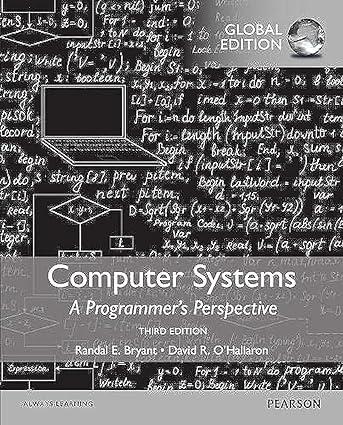Transposing the rows and columns of a matrix is an important problem in signal processing and scientific
Question:
Transposing the rows and columns of a matrix is an important problem in signal processing and scientific computing applications. It is also interesting from a locality point of view because its reference pattern is both row-wise and column-wise. For example, consider the following transpose routine:
![1 2 3 4 5 6 7 8 9 typedef int array [2] [2]; void transpose1 (array dst, array src) { 10 11 12 } int i, j;](https://dsd5zvtm8ll6.cloudfront.net/images/question_images/1698/2/2/3/4416538d551433ef1698223440136.jpg)
Assume this code runs on a machine with the following properties:
. sizeof(int) = 4.
. The src array starts at address 0 and the dst array starts at address 16 (decimal).
. There is a single L1 data cache that is direct-mapped, write-through, and write allocate, with a block size of 8 bytes.
. The cache has a total size of 16 data bytes and the cache is initially empty.
. Accesses to the src and dst arrays are the only sources of read and write misses, respectively.
A. For each row and col, indicate whether the access to src[row][col] and dst[row][col] is a hit (h) or a miss (m). For example, reading src[0][0] is a miss and writing dst[0][0] is also a miss.

B. Repeat the problem for a cache with 32 data bytes.
Step by Step Answer:

Computer Systems A Programmers Perspective
ISBN: 9781292101767
3rd Global Edition
Authors: Randal E. Bryant, David R. O'Hallaron





